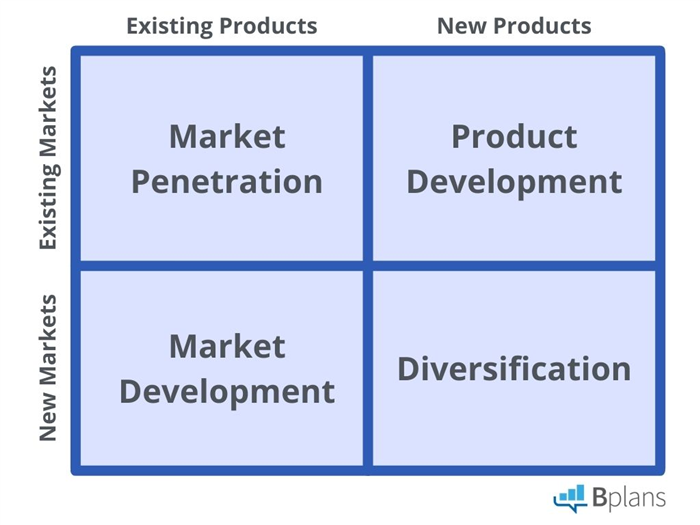Contents
Creating a Market Penetration Strategy — Guide for 2024
If you want to start or expand your business, you must understand how to enter and grow in your chosen market. This requires developing a market penetration strategy based on your market analysis. So, what is a market penetration strategy and how do you develop one?
Market penetration definition
Market penetration is the amount your business sells compared to the estimated total available market (TAM). It helps define the serviceable available market (SAM), which is the portion you estimate you can acquire. It also serves as a baseline for increasing your service obtainable market (SOM), or the subset of customers you can realistically acquire.
Calculating market penetration
Market penetration is both a measurement and an activity. It involves your attempt to enter or expand into a market. The measurement is the assessment of how much you anticipate selling or actually sell as a percentage of the total available market. You can calculate this using the following equation:
Market penetration rate = (Number of customers / target market size) x 100
Your market penetration measurement can inform your market penetration strategy. Although it may not be exact, it provides a legitimate number to measure your results. It serves as a baseline for long-term viability and helps evaluate marketing or sales campaigns. Review this measurement before and after campaigns to gauge performance.
Understanding market penetration
To take advantage of your market penetration rate, you need to know its implications for your business in the market. Consider the impact on brand perception, your position compared to competitors, potential growth opportunities, and the threat of new entrants.
In general, high market penetration indicates certain advantages:
- Industry or market leadership
- Established position within your industry
- Economies of scale
- Strong pricing position
- High brand awareness
- Established distribution channels and vendor relationships
Having the greatest market penetration is not necessary for business viability. When starting out, you will likely have a small market share. To achieve greater market penetration, use your research to develop a market penetration strategy.
What is a market penetration strategy?
A market penetration strategy aims to gain dominance in an existing market. It often focuses on capturing a larger share of the market through market development. Market development involves targeting an underserved, non-buying, or new portion of the market.
For example, let’s consider a SaaS company specializing in enterprise-level business email management. Instead of competing for existing enterprise customers, the company can focus on smaller businesses by providing a lighter software version. Alternatively, they can target single accounting firms with the intent of expanding their reach. By doing this, they grow their customer base, expand the market, and enhance their brand equity.
Creating a market penetration strategy
If market development is not possible, focus on acquiring customers already served in the market. The Ansoff Matrix is an effective tool for developing your market penetration strategy, highlighting different growth paths.

Typically, product development and diversification are more costly and riskier options, while market development and market penetration are lighter risk strategies. More than likely, you’ll be leveraging multiple growth strategies within your market penetration strategy. But the path you take depends on your current market penetration, competitor positioning, and market expectations.
To evaluate and execute different strategies, start with a market analysis and your penetration rate before using the Ansoff Matrix. Then explore the available market penetration strategies.
Market penetration strategy examples:
– Price adjustments: Lower or increase your pricing to differentiate your business from competitors or create different pricing tiers for specific customer needs.
– Launch a new product or service: Ensure there is a need for it, conduct market research and forecasting, and make sure it’s viable for your business.
– Adjust your current products: Define niche segments within your target market and focus on improving economies of scale by leveraging core components.
– Partner with or acquire other businesses: When facing tough competition, consider partnering or acquiring a competitor to strengthen your customer base and resources. This is also effective when entering a new market.
– Adjust your marketing campaigns: Optimize your current marketing spend by adjusting messaging, offering incentives, relaunching campaigns, or creating a loyalty program. Analyze your target audience and competitors to identify pain points and improve your value proposition.
Connect market penetration to your overall business strategy:
– Incorporate a review of your market penetration rate and ongoing strategies into your monthly plan review. This ensures alignment with financial forecasts, milestones, and current tactics.
– If a penetration strategy doesn’t support your goals, consider reallocation or adjustment of resources. Reviewing it alongside your plan and financials will help you make informed decisions.
Hello!
I’m Andrew Brooks, a seasoned finance consultant from the USA and the mind behind phonenumber247.com.
My career is built on a foundation of helping individuals and businesses thrive financially in an ever-changing economic landscape. At phonenumber247.com, my aim is to demystify the complex world of finance, providing clear, actionable advice that can help you navigate your financial journey with confidence. Whether it’s personal finance management, investment strategies, or understanding the nuances of market dynamics, I’m here to share insights and tools that can propel you towards your financial goals.
Welcome to my digital space, where every piece of advice is a step closer to financial clarity and success!
